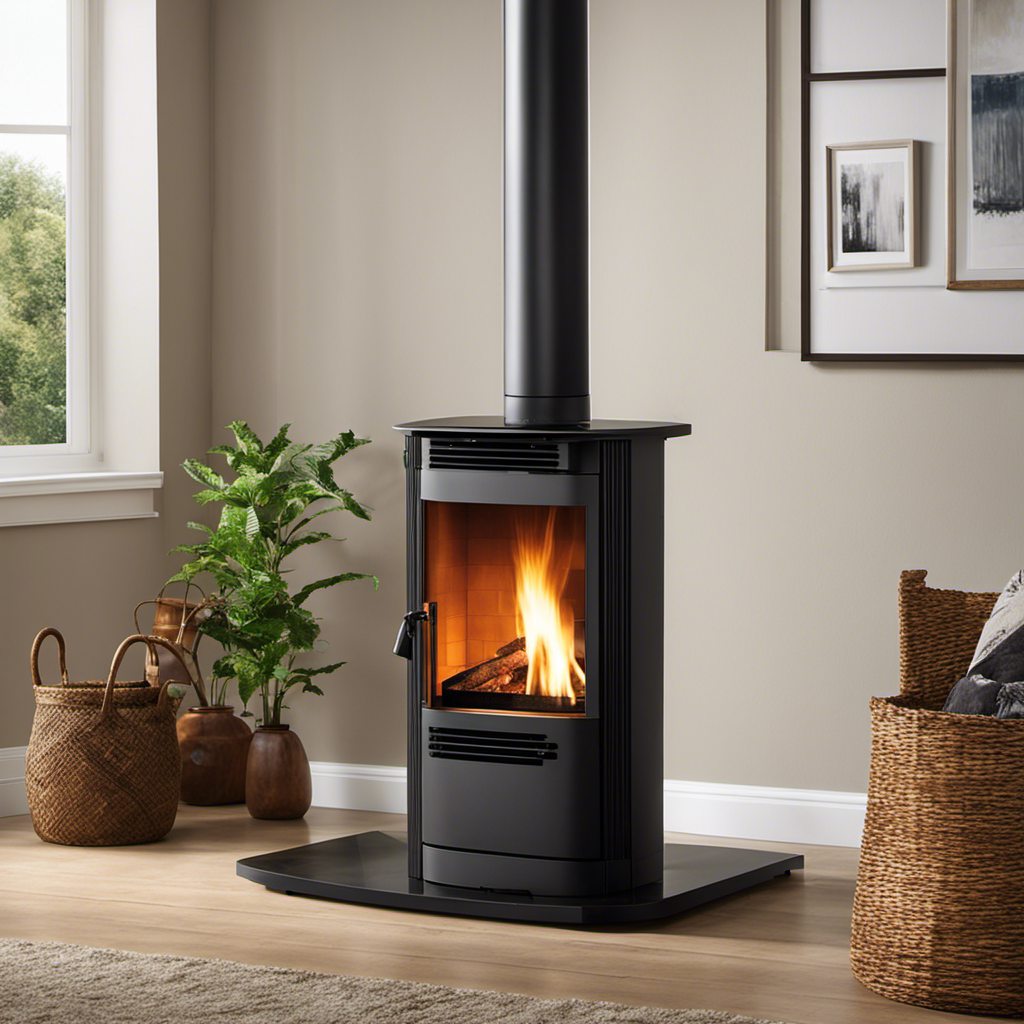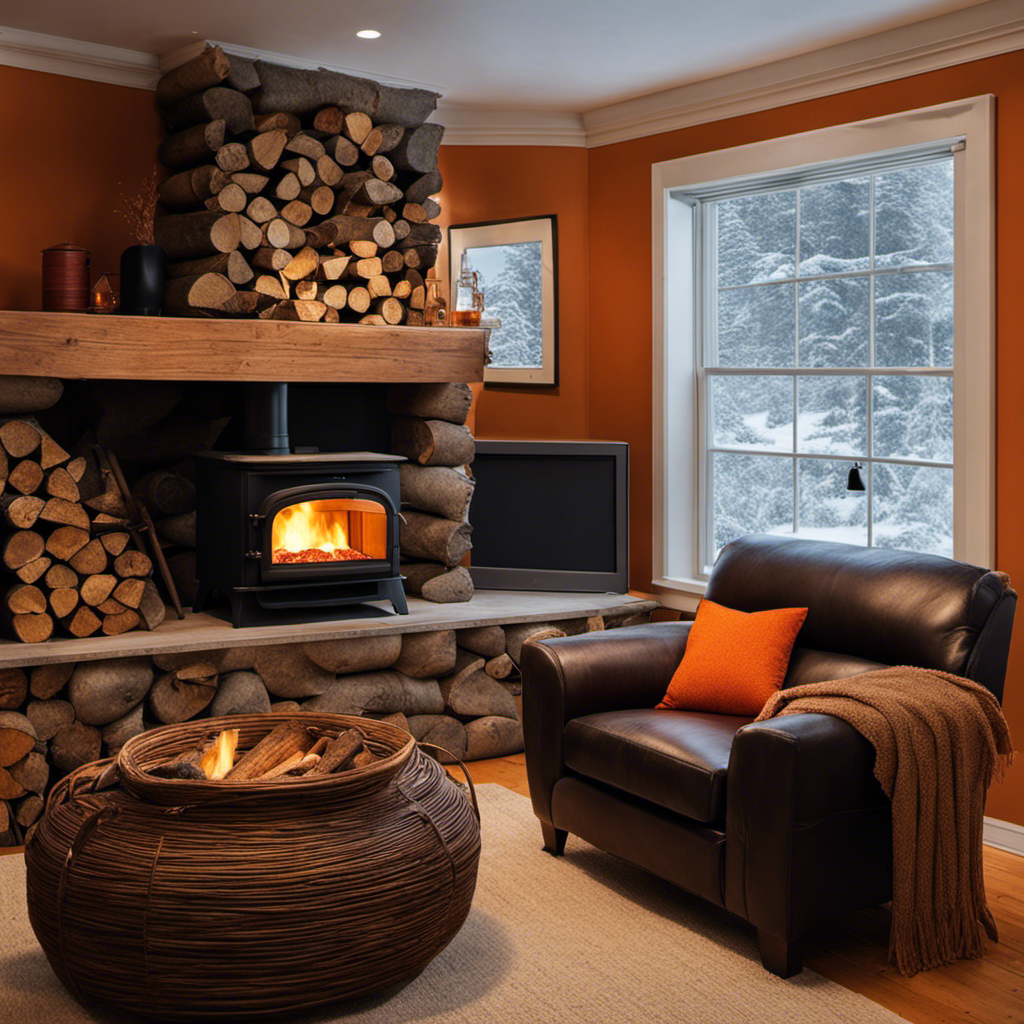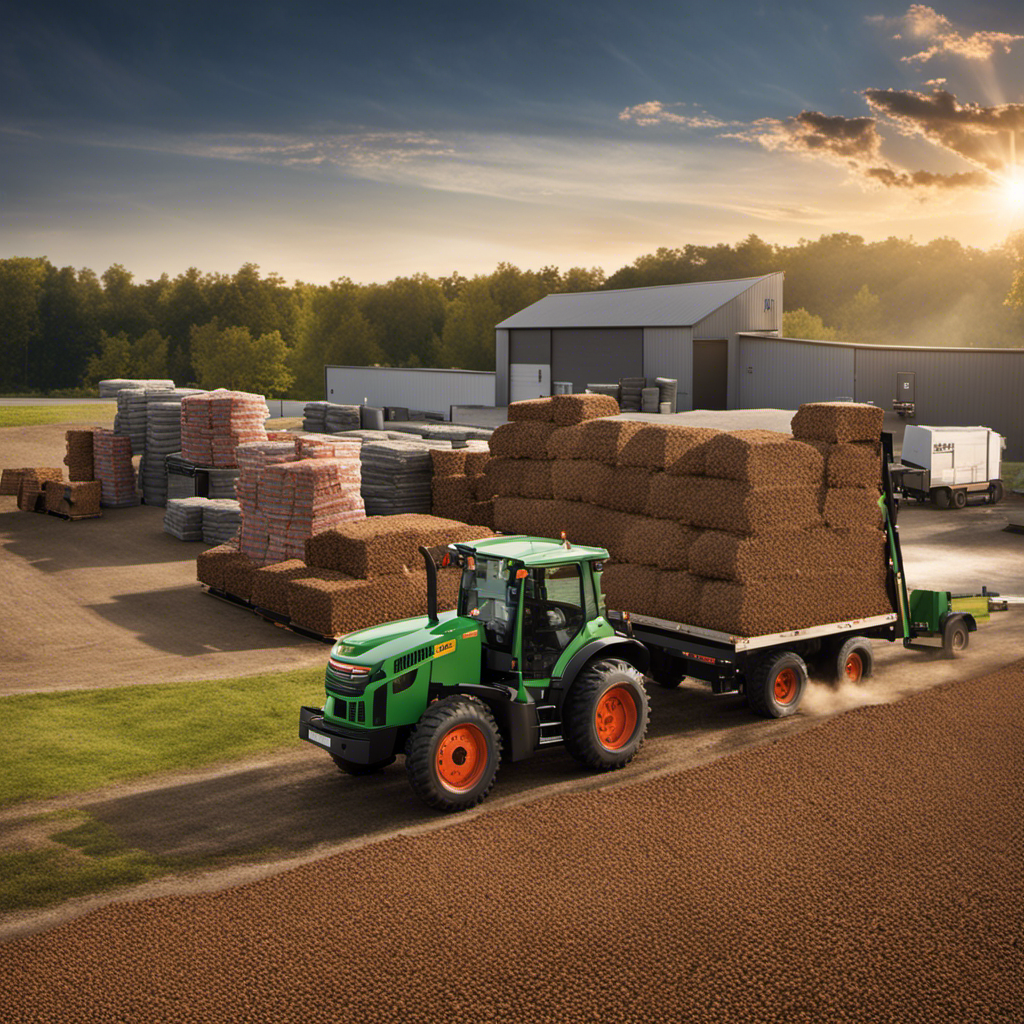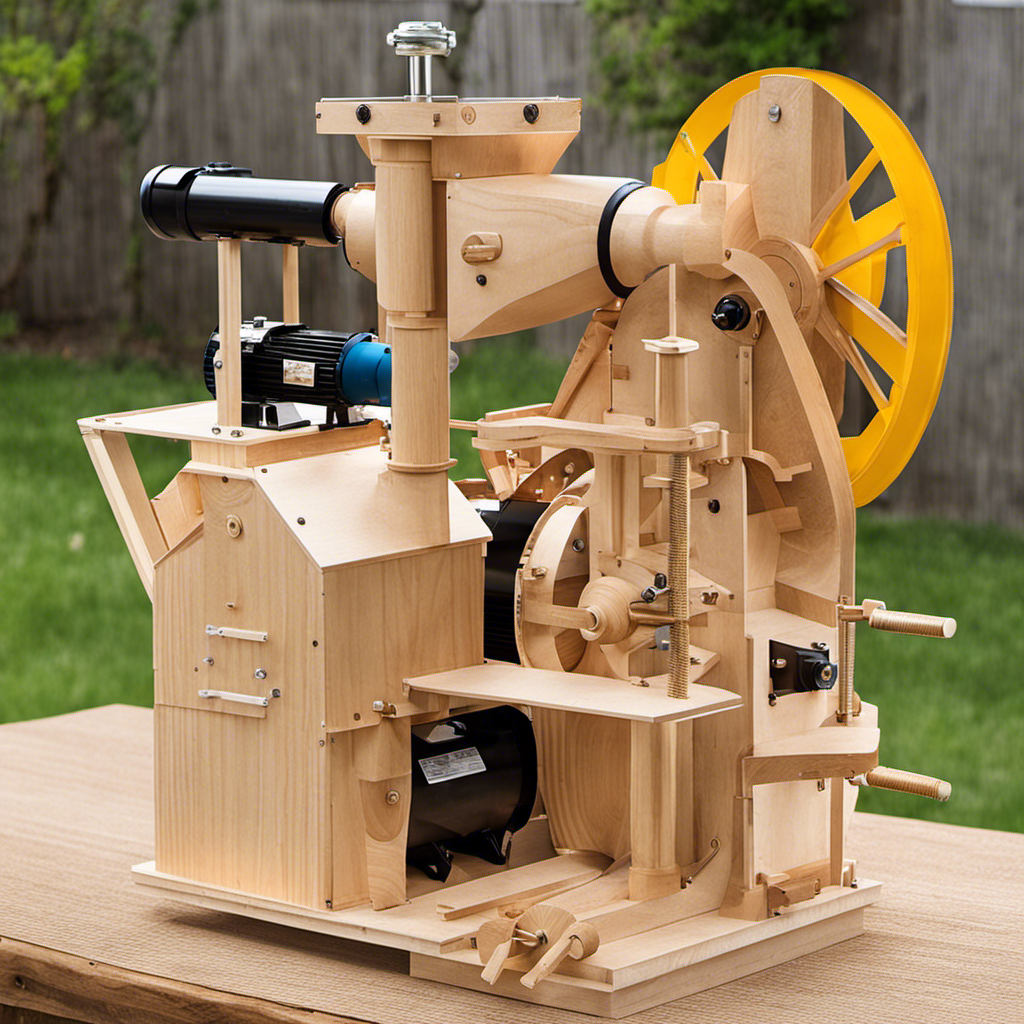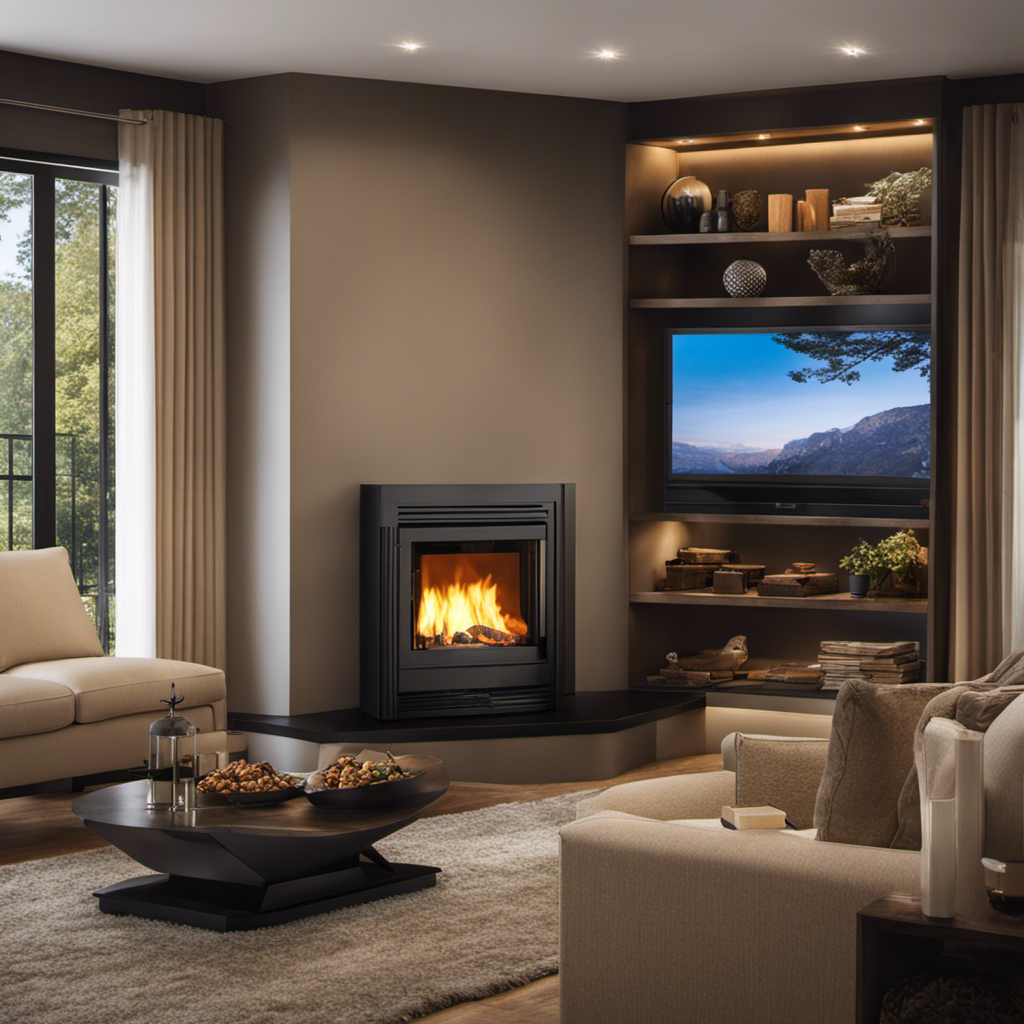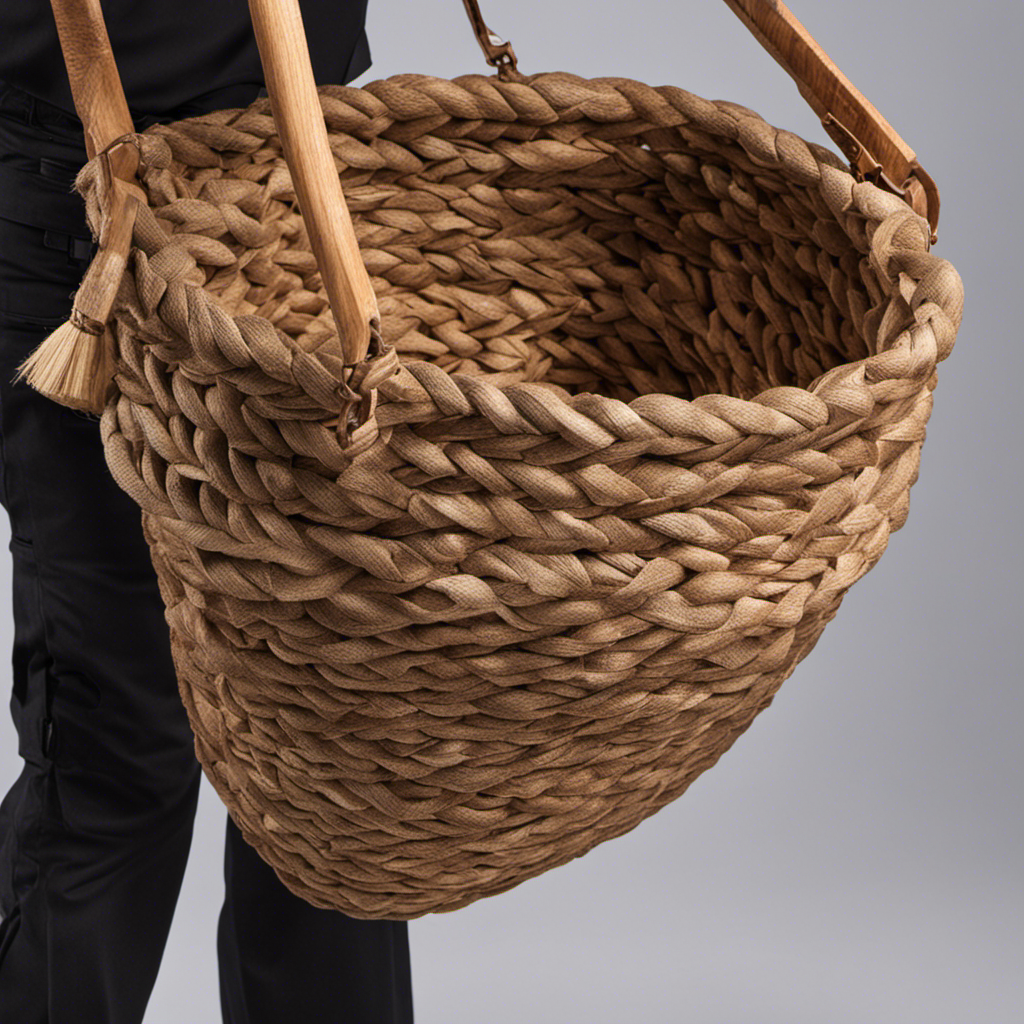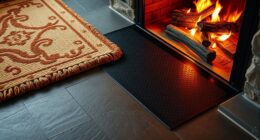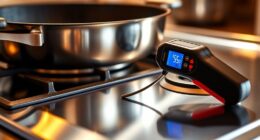Were you aware that a typical wood pellet stove is capable of operating for as long as 24 hours with just one load of pellets in its hopper?
In this article, I will delve into the factors that affect the runtime of a wood pellet stove and provide tips on maximizing its operating time.
By understanding the burn rate of wood pellets and comparing different stove models, you’ll be equipped with the knowledge needed to estimate how long your wood pellet stove will run.
Key Takeaways
- Efficiency of the stove, quality of wood pellets used, burn rate of wood pellets, and airflow control all play a significant role in determining the runtime of a wood pellet stove.
- Understanding the burn rate of wood pellets is crucial and can be influenced by factors such as pellet quality, airflow control, stove settings, regular maintenance, and monitoring.
- To maximize wood pellet stove operating time, regular cleaning and maintenance, using high-quality wood pellets, troubleshooting common issues, checking for blockages in the fuel feed system, and properly adjusting stove settings are recommended.
- When comparing the runtime of different wood pellet stove models, factors such as heating capacity, hopper size, burn rate, efficiency, and heating area coverage should be considered.
Factors That Affect the Runtime of a Wood Pellet Stove
There are several factors that can affect how long a wood pellet stove will run. One of the main factors is the efficiency of the stove itself. A well-designed and properly maintained stove will burn fuel more efficiently, resulting in a longer runtime.
Another important factor is the quality of the wood pellets used. Higher quality pellets, with low moisture content and consistent size, will burn more efficiently and provide a longer runtime. On the other hand, poor quality pellets can lead to a shorter runtime as they may not burn as efficiently or produce as much heat.
Understanding these factors and their impact on stove runtime is crucial for maximizing the efficiency and effectiveness of a wood pellet stove.
Now let’s delve into understanding the burn rate of wood pellets in a stove.
Understanding the Burn Rate of Wood Pellets in a Stove
To understand how quickly wood pellets burn in your stove, you need to monitor the burn rate closely. This will help you determine the burn efficiency and calculate the runtime of your wood pellet stove.
Here are some key factors to consider:
-
Pellet quality: High-quality pellets with low moisture content and uniform size burn more efficiently and last longer.
-
Airflow control: Adjusting the airflow can affect the burn rate. Finding the right balance is crucial for optimal performance.
-
Stove settings: Different stove settings, such as heat output and fan speed, can impact the burn rate and runtime.
-
Maintenance: Regular cleaning and maintenance of your stove can ensure proper combustion and prevent any issues that may affect burn efficiency.
Tips to Maximize the Operating Time of Your Wood Pellet Stove
By understanding the burn rate and implementing these factors, you can maximize the operating time of your wood pellet stove, ultimately saving energy and reducing costs.
To maximize efficiency, it is important to clean and maintain your stove regularly. Remove any ash buildup and clean the stove’s components to ensure proper airflow. Additionally, make sure to use high-quality wood pellets that have a low moisture content. Moist pellets can lead to incomplete combustion and reduced burn time.
Troubleshooting common issues such as low heat output or frequent shutdowns can also help maximize operating time. Check for blockages in the fuel feed system and ensure that the stove’s settings are properly adjusted.
When comparing the runtime of different wood pellet stove models, it is important to consider factors such as the stove’s heating capacity, hopper size, and burn rate.
Comparing the Runtime of Different Wood Pellet Stove Models
When comparing different models of wood pellet stoves, it’s important to consider factors like heating capacity, hopper size, and burn rate. The burn rate comparison and efficiency analysis play a crucial role in determining the runtime of a wood pellet stove. To help you understand the differences between models, here is a comparison table showcasing four popular wood pellet stove models:
| Model | Heating Capacity (sq ft) | Hopper Size (lbs) | Burn Rate (lbs/hr) |
|---|---|---|---|
| A | 1500 | 40 | 2 |
| B | 2000 | 50 | 2.5 |
| C | 1800 | 45 | 2.2 |
| D | 1700 | 35 | 1.8 |
Factors to Consider When Estimating the Runtime of a Wood Pellet Stove
Factors like heating capacity, hopper size, and burn rate significantly impact the runtime of a wood pellet stove. When estimating wood pellet consumption, it is essential to consider these factors that affect stove efficiency.
The heating capacity of a stove determines how much heat it can generate, and higher capacity stoves tend to burn more pellets. Hopper size refers to the storage capacity for pellets, and a larger hopper allows for longer periods between refills. Burn rate indicates how quickly the stove consumes pellets, with lower burn rates resulting in longer runtimes.
Other factors that can influence pellet consumption include the quality of the pellets and the insulation of the space being heated. By considering these factors, it is possible to estimate the runtime of a wood pellet stove more accurately.
Frequently Asked Questions
What Is the Average Cost of Wood Pellets for a Wood Pellet Stove?
The average cost of wood pellets for a wood pellet stove depends on various factors such as location, supplier, and quantity purchased. Availability of wood pellets can also vary depending on the region and season.
Can a Wood Pellet Stove Be Used as the Primary Heat Source for a Home?
As the primary heat source, a wood pellet stove offers exceptional efficiency and numerous advantages. Its advanced technology ensures efficient heating, reducing reliance on other heating sources and providing warmth for extended periods.
How Often Do Wood Pellets Need to Be Replenished in a Wood Pellet Stove?
Wood pellets need to be replenished in a wood pellet stove quite frequently. The pellet consumption rate is high, and I find myself constantly adding more pellets to keep the stove running efficiently.
Are There Any Safety Concerns or Precautions to Be Aware of When Operating a Wood Pellet Stove?
When operating a wood pellet stove, it is important to be aware of safety concerns and take necessary precautions. These may include regular maintenance, proper ventilation, and using certified pellets to prevent fire hazards and ensure efficient operation.
Can a Wood Pellet Stove Be Used in Areas With Strict Air Quality Regulations?
In areas with strict air quality regulations, it is important to ensure that wood pellet stoves meet the necessary emission standards. Proper maintenance, regular cleaning, and using high-quality pellets can help in complying with these regulations.
Conclusion
In conclusion, it’s important to understand the various factors that can impact the runtime of a wood pellet stove. By maximizing the burn rate of wood pellets and following some helpful tips, you can extend the operating time of your stove.
Additionally, comparing different stove models and considering factors such as hopper size and heat output will give you a better estimate of how long your stove will run.
So, with a little knowledge and careful consideration, you can enjoy the cozy warmth of your wood pellet stove for longer periods of time.

